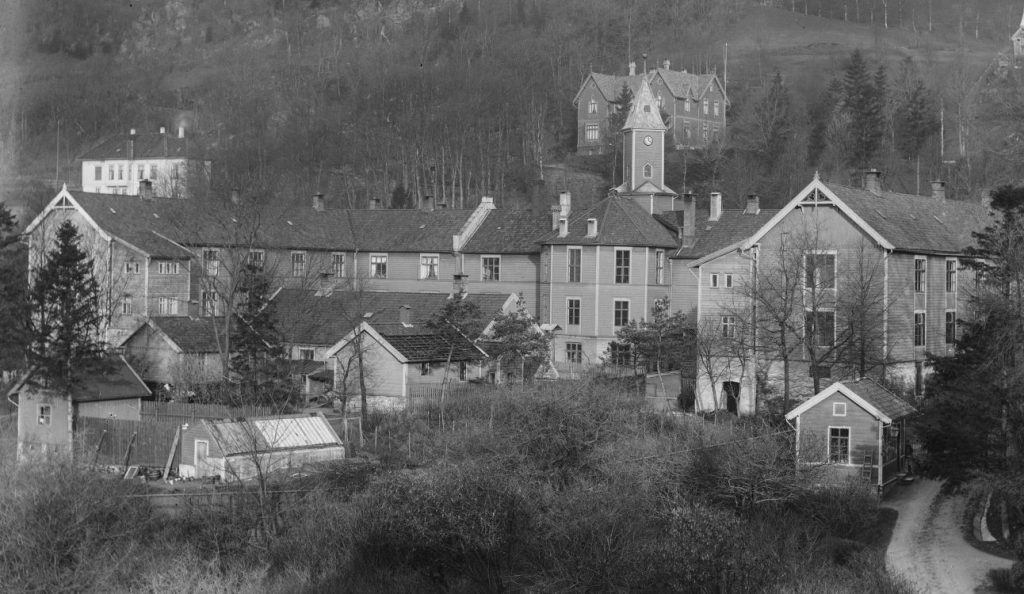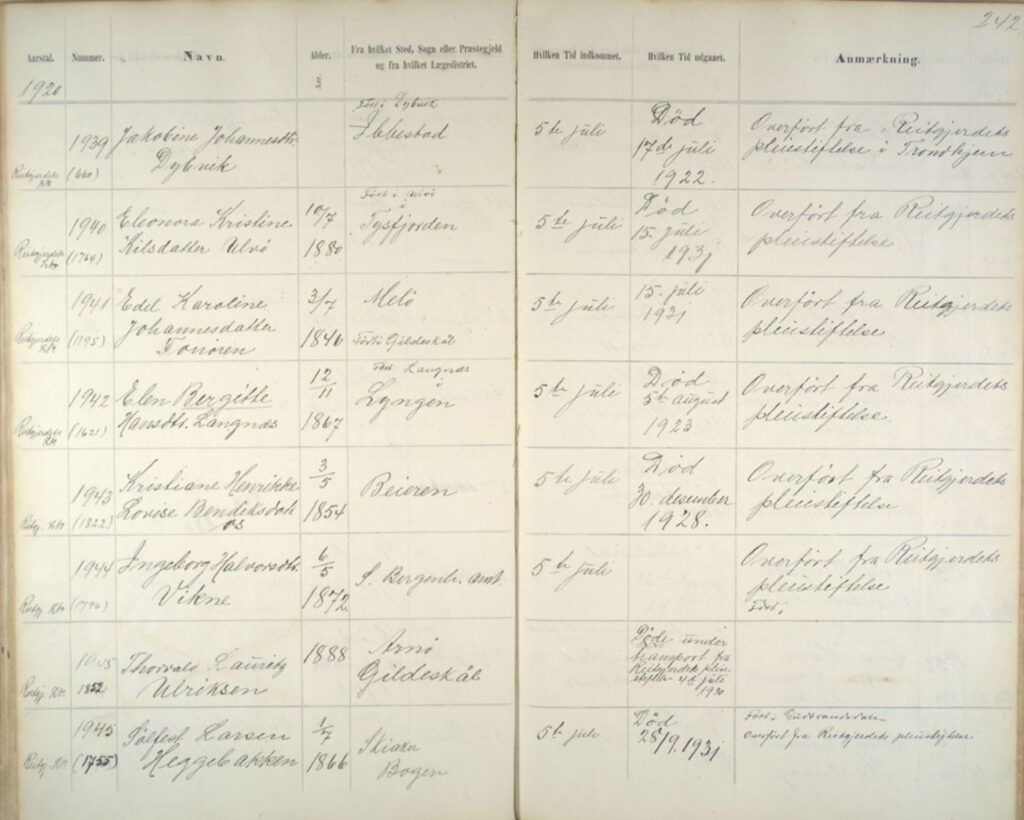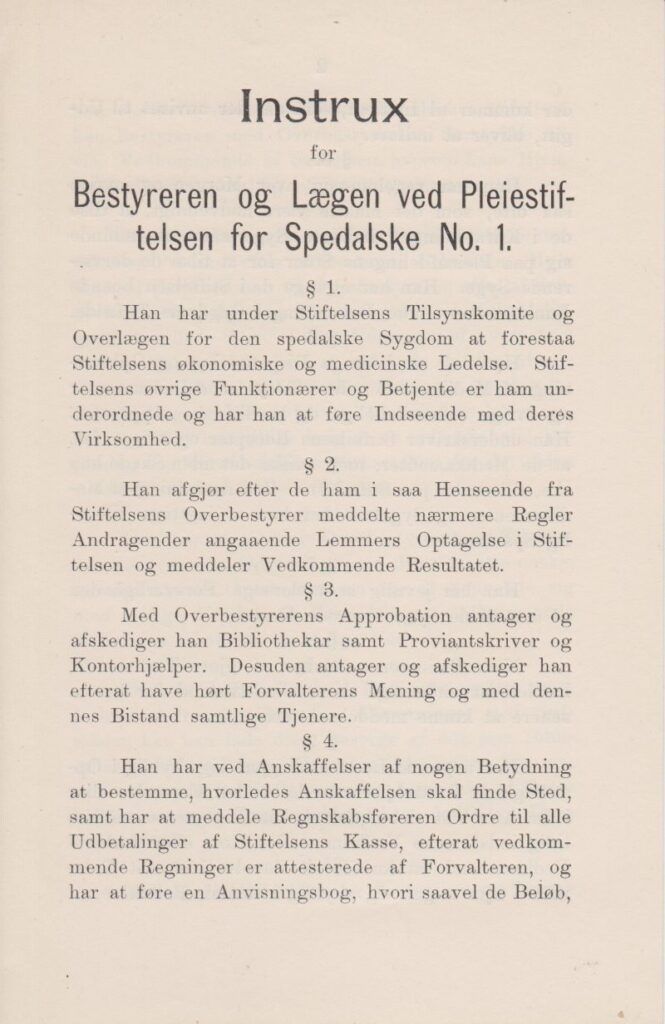A new type of hospital from 1895
When Lungegaard Hospital was closed in 1895, the nature of Pleiestiftelsen changed. From that point, both treatment trials and scientific studies became part of everyday life at the hospital. H. P. Lie, who became the new head physician and superintendent at Pleiestiftelsen, arranged for a laboratory to be set up and for Lungegård hospital’s library to be moved to the hospital. At the same time, the hospital also began receiving patients with syphilis and other skin diseases.
Pleiestiftelsen was the last leprosy hospital in operation in Norway and, as other institutions closed, their patients were transferred there. The first of these were 39 patients from Lungegaard Hospital, who moved the few hundred metres to Pleiestiftelsen in 1895. In the same year, the last 25 residents from Reknes pleiestiftelse were also transferred there. A total of 41 patients arrived there in two rounds when Reitgjerdet pleiestiftelse closed in 1920.
As leprosy gradually became less prevalent in Norway, there was a lot of spare capacity at this large institution and parts of the building were rented to the City of Bergen. However, the last residents who had had leprosy were allowed to stay until 1973.

Photo: Atelier Knud Knudsen. Detail. The University of Bergen Library.

The Regional State Archives of Bergen.

Directive for physician and superintendent at Pleiestiftelsen dating from 1897.
The Regional State Archives of Bergen.



